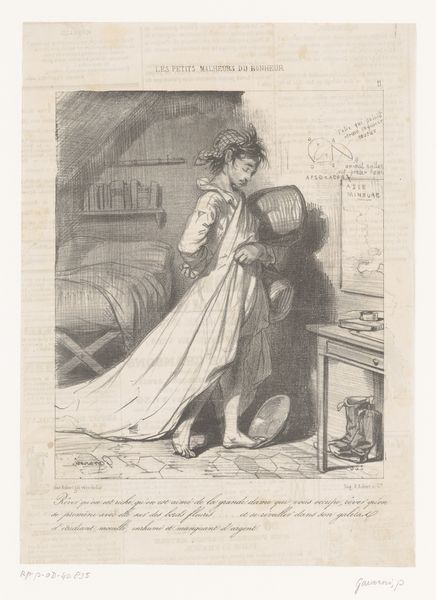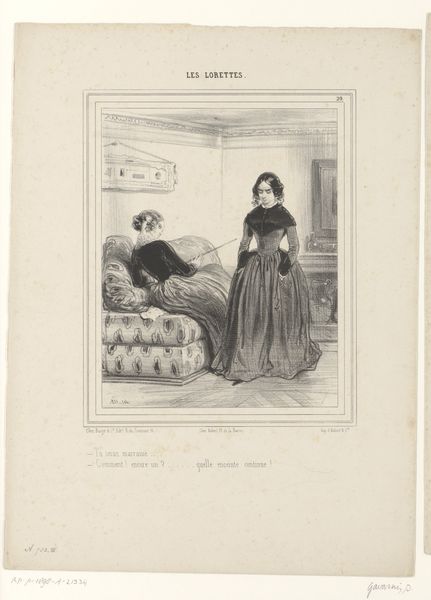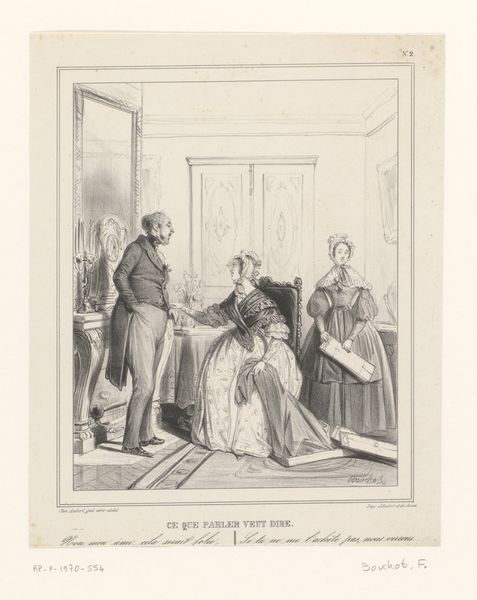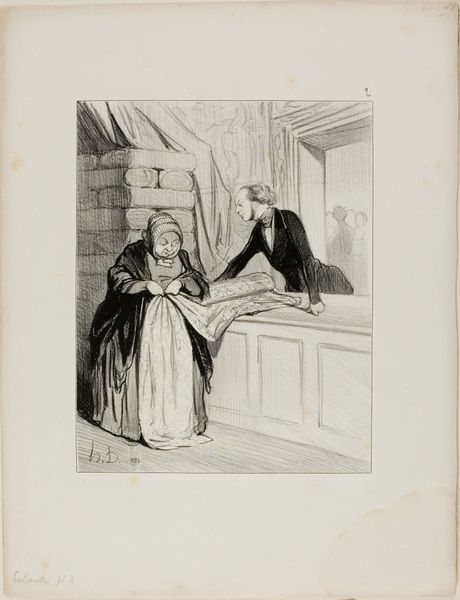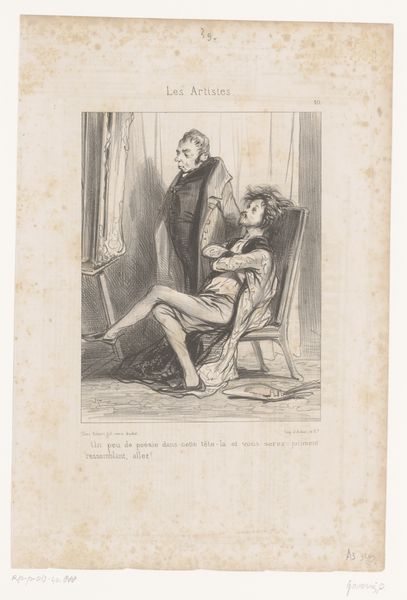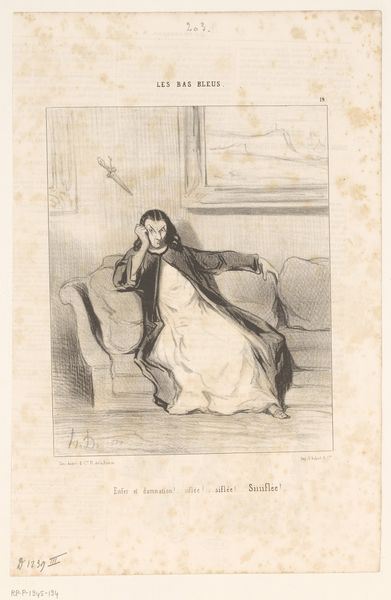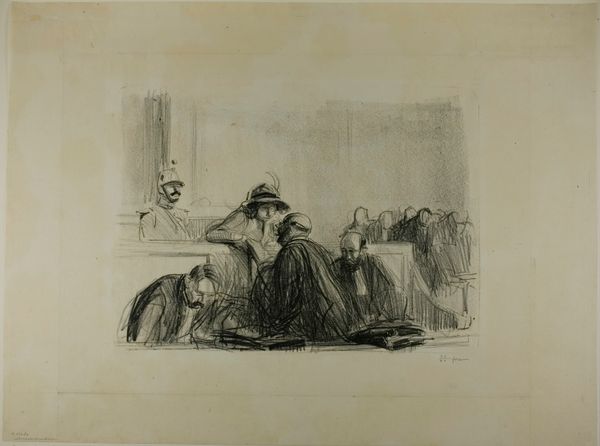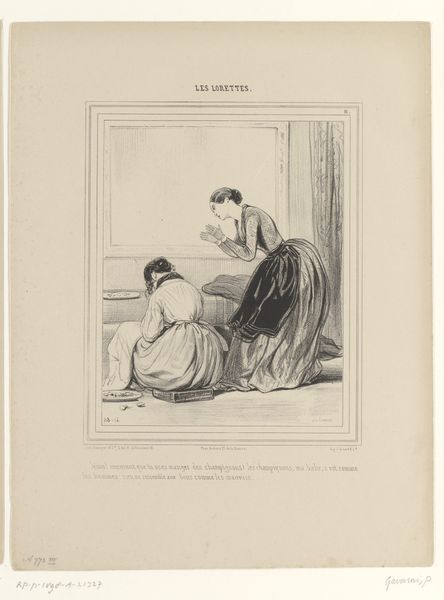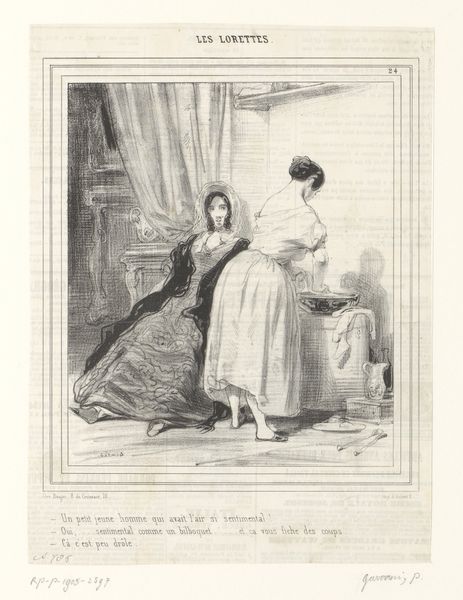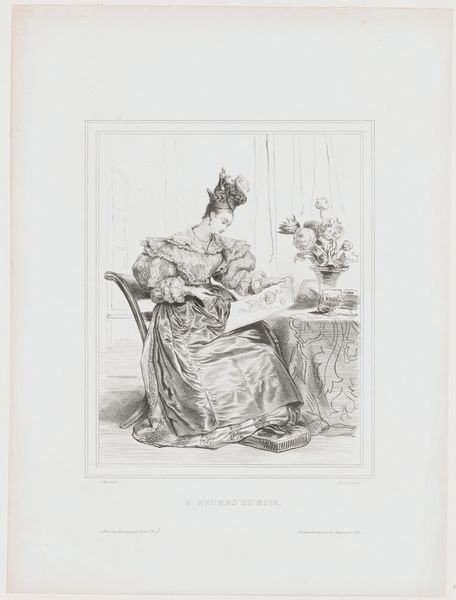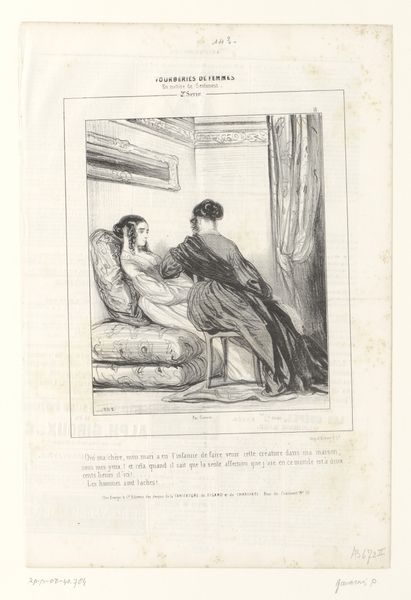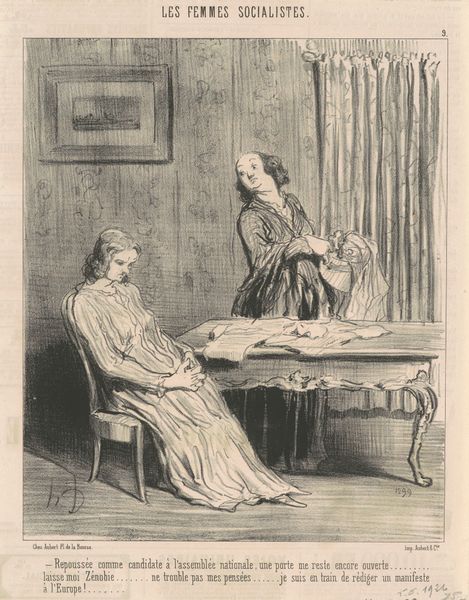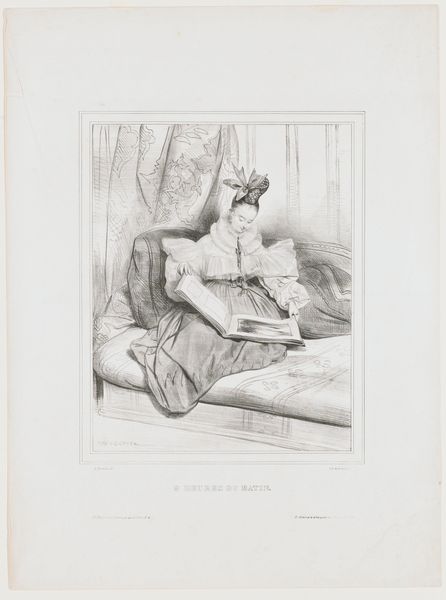
Dimensions: 357 × 275 mm
Copyright: Public Domain
Editor: Here we have Winslow Homer's 1863 lithograph, "Campaign Sketches: The Letter for Home," currently housed at the Art Institute of Chicago. The grey tones and intimate setting really give off a sense of quiet reflection amidst what must have been a chaotic time. What formal elements stand out to you in this work? Curator: The composition is intriguing, immediately directing our gaze to the central figures: the woman writing and the wounded soldier reclining. Note how the artist employed light and shadow to create a sense of depth and to subtly separate them from the indistinct forms of other recuperating men who seem far off. The contrast in textures is equally significant: the smoothness of her shawl juxtaposed with the rough textures of his blanket, differentiating care from weariness. Editor: So you’re focusing on the interplay of textures and lighting? What about the larger message? Curator: Let us resist imposing narrative assumptions onto the aesthetic presentation. The diagonal lines formed by the bedclothes pull our focus from the letter towards an open, geometrically arranged window with the outside world reduced to fractured forms. Are we to assume the patient can read? Look also at the window's compositional relation to the white paper in her lap: one reflecting fractured outside views and the other about to be filled with words, perhaps also with falsehoods. What semiotic reading of these combined elements could we pursue? Editor: I see what you mean. It’s less about the literal story, and more about the visual dialogue between the objects. The composition asks questions that easy interpretation won't fully reveal. Curator: Precisely. The true substance of this piece rests not merely in its ostensible subject matter but its deliberate and evocative arrangement of forms and visual textures. It really challenges what we see and expect of narrative and genre subjects during a pivotal point of Romanticism. Editor: That's helped me look at the print with new eyes. I’m taking away the importance of considering the arrangement and qualities as a crucial way to interpret art, regardless of any narrative context. Curator: Indeed, looking closely allows the art to speak on its own terms, allowing multiple avenues of discussion that broaden meaning in this lithograph.
Comments
No comments
Be the first to comment and join the conversation on the ultimate creative platform.
